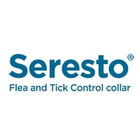
Introduction
If you’ve noticed your dog’s eyes looking red or irritated, it’s natural to be concerned. Red eyes in dogs can be caused by something as simple as dust irritation — or a sign of an underlying health condition that needs prompt veterinary care. Understanding potential causes and recognizing symptoms early can help you protect your dog’s vision and overall health.
In this article, we’ll explain the common causes of red eyes in dogs, what symptoms to look for, and when you should take your pet to the vet.
Why Do Dogs Get Red Eyes?
Redness in a dog’s eyes happens when the blood vessels in the eye become enlarged or inflamed. This can occur due to minor irritations, allergies, infections, or more serious conditions such as glaucoma. Here are the most common causes:
1. Allergies
Just like humans, dogs can suffer from environmental allergies to pollen, dust, mold, and even certain foods.
Symptoms of eye allergies include:
- Red or watery eyes
- Frequent rubbing or pawing at the face
- Sneezing or nasal discharge
If your dog’s redness appears seasonally or after being outdoors, allergies are likely the cause. Keeping your home dust-free and wiping your dog’s face with a damp cloth after walks can help reduce irritation.
2. Eye Irritation
Simple irritants, such as shampoo, smoke, dirt, or foreign objects (such as a seed or hair), can cause redness.
If your dog recently had a bath, was near smoke, or played outdoors in windy conditions, their eyes might just be irritated. Usually, this resolves on its own within a day or two, but if redness persists, consult your vet.
3. Conjunctivitis (Pink Eye)
Conjunctivitis is one of the most common reasons for red eyes in dogs. It’s an inflammation of the tissue lining the eyelid and eyeball.
Symptoms include:
- Red or puffy eyes
- Thick discharge (clear, yellow, or green)
- Squinting or blinking often
Causes of conjunctivitis range from allergies and infections to trauma or foreign bodies. Treatment depends on the underlying cause and may include antibiotic or anti-inflammatory eye drops prescribed by your vet.
4. Dry Eye (Keratoconjunctivitis Sicca)
Dry eye occurs when your dog’s tear glands don’t produce enough tears to keep the eyes moist. This leads to irritation, redness, and sometimes a sticky discharge.
Breeds commonly affected include: Cocker Spaniels, Bulldogs, and Pugs.
Treatment usually involves medicated eye drops that stimulate tear production or replace lost moisture.
5. Glaucoma
Glaucoma is a severe eye disorder that develops when pressure builds up in the eye; if left untreated, it can result in permanent vision loss.
Symptoms to watch for:
- Persistent redness
- Cloudy or bulging eyes
- Loss of appetite or lethargy due to pain
Glaucoma is an emergency — immediate veterinary care is required to prevent blindness.
6. Corneal Ulcers
A corneal ulcer refers to an open sore or injury affecting the outer layer of your dog’s eye, often caused by trauma, scratching, or infection.
Signs include:
- Red, watery eyes
- Squinting or keeping one eye closed
- Sensitivity to light
Your veterinarians will perform a dye test to detect ulcers and prescribe antibiotics or other medications to help the eye heal.
7. Eye Infections
Bacterial, fungal, or viral infections can cause inflammation and redness. Infections are often accompanied by discharge, swelling, or crust around the eyes.
Common causes include:
- Injuries
- Exposure to infected pets
- Weak immune system
Timely diagnosis and antibiotic or antiviral treatment can help clear the infection and prevent complications.
8. Eyelid or Eyelash Problems
Some dogs have structural eye issues, like inward-turning eyelids (entropion) or abnormal eyelash growth (distichiasis), which irritate the cornea and cause redness.
These conditions often require surgical correction to prevent chronic discomfort or damage.
9. Trauma or Injury
A sudden impact, scratch, or rough play can injure your dog’s eye. If redness appears suddenly or your dog avoids light, keep them calm and take them to the vet immediately. Avoid touching or rinsing the eye without professional guidance.
When to See a Vet
While mild redness may resolve on its own, you should see a veterinarian immediately if:
- The redness lasts more than 24 hours
- There’s swelling, discharge, or cloudiness
- Your dog is pawing or rubbing their eyes frequently
- They seem to be in pain or keeping one eye closed
Eye conditions can worsen quickly, so timely diagnosis is key to protecting your dog’s vision.
How to Prevent Red Eyes in Dogs
Taking preventive steps can make a big difference in maintaining your dog’s eye health and preventing future problems.
- Keep their face clean: Wipe gently with a damp cloth after outdoor activities.
- Avoid irritants: Keep them away from cigarette smoke, strong chemicals, and dust.
- Regular grooming: Trim hair around the eyes to prevent irritation.
- Use vet-approved eye drops if your vet recommends them.
- Schedule regular vet visits to catch issues early.
Home Care Tips
If your dog’s eyes look slightly red but otherwise normal:
- Use a saline eye rinse to flush out dust or debris.
- Prevent scratching by using an Elizabethan collar (e-collar).
- Avoid using any human eye drops — they can be harmful to pets.
If redness doesn’t improve within a day or two, contact your vet for further advice.
Final Thoughts
Red eyes in dogs are common but should never be ignored. While some causes are minor, others may signal serious eye problems that can affect your dog’s sight and comfort.
Pay attention to other symptoms, such as discharge, swelling, or sensitivity to light. Early intervention and professional care are the best ways to keep your pet’s eyes healthy and pain-free.






